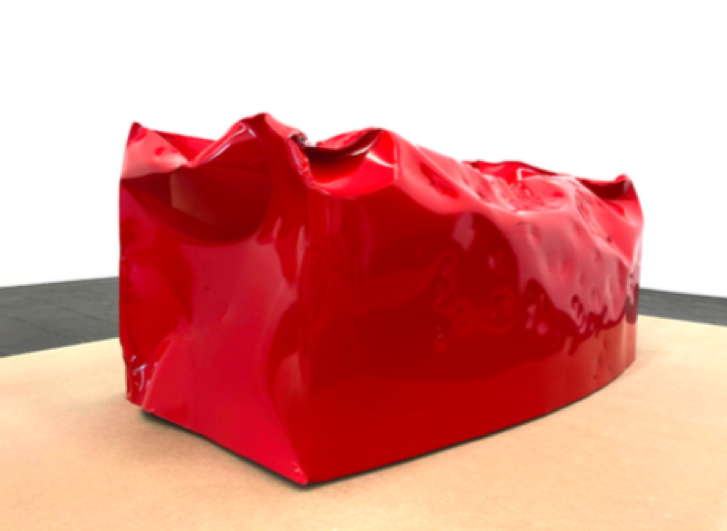September Gallery: ‘Sit In’ Organized by Kristen Dodge

This last weekend I visited a show at September Gallery, run by Kristen Dodge in Hudson, NY. The show titled Sit-In, was a conglomeration of eighteen women’s sculptures that were either a chair, explored themes based on chairs or incorporated a chair as material. Some “could” technically be used to sit in, while others simply used a chair along with other materials. Dodge listed in her press release a number of social power dynamics employed by relationships to seating, such as an interrogation room with two opposing seats or the head of the table reserved for head of households or guests of honor. Certain power dynamic instructions can be given, such as a “Sit-Down!” declared by a principal about to reprimand a student, as well as symbols of respect, such as rising out of your seat in congregations and court or for the applaud of a performer.
Kate Gilmore is usually known for her very physical performative actions, generally resulting in destructive act. Her piece titled Bend Mother Fucker, shows metal bench which looks like it has been battered by a wrecking ball, pitted, dented, smashed, squashed, smushed, crumpled and then painted a hot shiny red. In the materials list, besides steel and enamel, she also mentions audience participation, which we are left to assume had a part of the destruction of this once presumably rectangular minimal form. We can wonder if this bench looked “nicer” or was more “useful” before as its minimal rectangular prism form. In a way, this bench has been formed by the body, for the body, caving to more than just comforts to support a body. Now it shows the result of not only the body, but of the mind’s needs, in this case, to unleash peoples visceral frustrations or angsts, or maybe it’s merely a celebration of humans will over materials, as they yield to our whims and needs.

Jessica Jackson Hutchins, Drawn Onward, 2017, chair and ceramic 30 x 21 x 26 inches photo credit: Jesse Greenberg
Another piece on view was Drawn Onward by Jessica Jackson Hutchins, who regularly uses couches and other types of seating in her work. A common store bought a metal framed chair with wicker seating that has been blasted out seemingly by the weight of a hefty ceramic bowl. This piece seems to turn the chair into a pedestal, while turning the ceramic vessel into the placeholder for the body. In opposition to Kate Gilmore’s piece, though this chair has been destroyed, there is no sense of violence or destruction, but rather an elegant erosion of the materiality of what we can assuredly assume is a chair. Hutchins brings it to a place now where it was a chair. The tendrils of unwoven and broken wicker streaming down to the floor have been lightly colored by Hutchins, as a way to note an affirmation of the evolution of this chair, beyond its utilitarian use.

Jessi Reaves, Mutants Butterfly Chair, 2017, plywood, plastic, leather, hardware, wood, sawdust, wood glue 34 x 40 x 41 inches, Photo credit: September Gallery
Jessi Reaves work titled Mutants Butterfly Chair, was made mostly out of cut shaped plywood, a conglomerated putty made of sawdust, and wood glue draped with what might be the actual fabric from a Butterfly chair, which the title and shape seem to mimic. The Butterfly chair was designed in Buenos Aires, Argentina, in 1938 by three architects who were working with Le Corbusier’s studio, a leading pioneer of the minimal modernist movements of architecture and furniture. The butterfly chair, among much of its design at the time, served as objects of utilitarian use that could also behave like works of art, while in their passive use in homes and businesses. Reaves entire body of work seems to play in that area of furniture as art or art as place for the body.
Sit-In playfully boundaries the sensibility of a furniture show-room. All of the sculptures or chairs seemingly face one direction placed on low framing plinths, with each chair proudly presenting their own personality. In some cases, the viewer is invited to participate and sit, though with so many unique pieces you’ll find yourself meandering between them all for a while.



